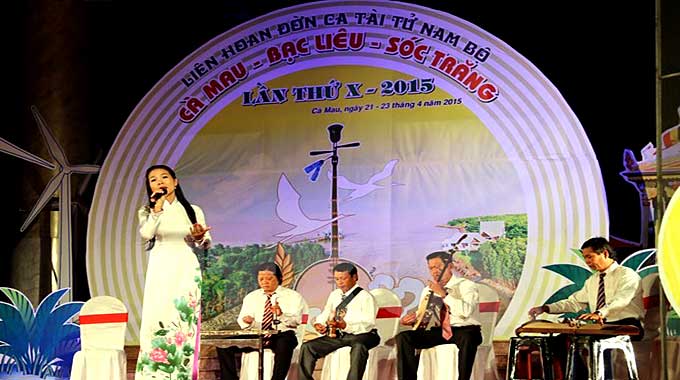Traditional art aficionados will have a chance to experience the southern folk music space when attending the Don Ca Tai Tu Festival which opened in the southern province of Long An on August 14.

During the three-day event, some 150 local singers and instrumentalists will deliver 80 performances praising patriotism and the indomitable spirit of southerners in the fight for national independence as well as the great changes in their homeland in the reform era.
According to Nguyen Van Danh, vice director of the provincial Department of Culture, Sports and Tourism, the festival is not only a golden chance for local artists to exchange experience but it also provides opportunity to honour individuals and organisations who have made great efforts to safeguard the art of Don Ca Tai Tu.
Known as a musical art that has both scholarly and folk roots, Don Ca Tai Tu developed in southern Viet Nam in the late 19th century. The impromptu art honours the creativeness and artistry of the performers.
The music genre was added to the National List of Intangible Cultural Heritage in 2012.
UNESCO recognised the art as an intangible cultural heritage on December 5, 2013 during the 8th session of the Intergovernmental Committee for the Safeguarding of the Intangible Cultural Heritage in Baku, Azerbaijan.
The art is performed at numerous events, such as festivals, ‘death anniversary' rituals, and celebratory social events. The audience can join in, by practicing, making comments or creating new words for songs.
It has been handed down from generation to generation through official and unofficial forms of education in all 21 southern provinces, where the art form is popular. Don ca tai tu has continually been popularised through cultural exchanges among people, presenting their mutual harmony and respect.
The art form is played on a variety of different instruments, including the kim (moon-shaped lute), co (two-stringed fiddle), tranh (16-string zither), ty ba (pear-shaped lute), song lang (percussion), bau (monochord) and sao (bamboo flute), and the violin and guitar, which were adapted.
The musicians who contribute to Don ca tai tu include master instrumentalists, master lyricists, master singers, instrumentalists, and singers.